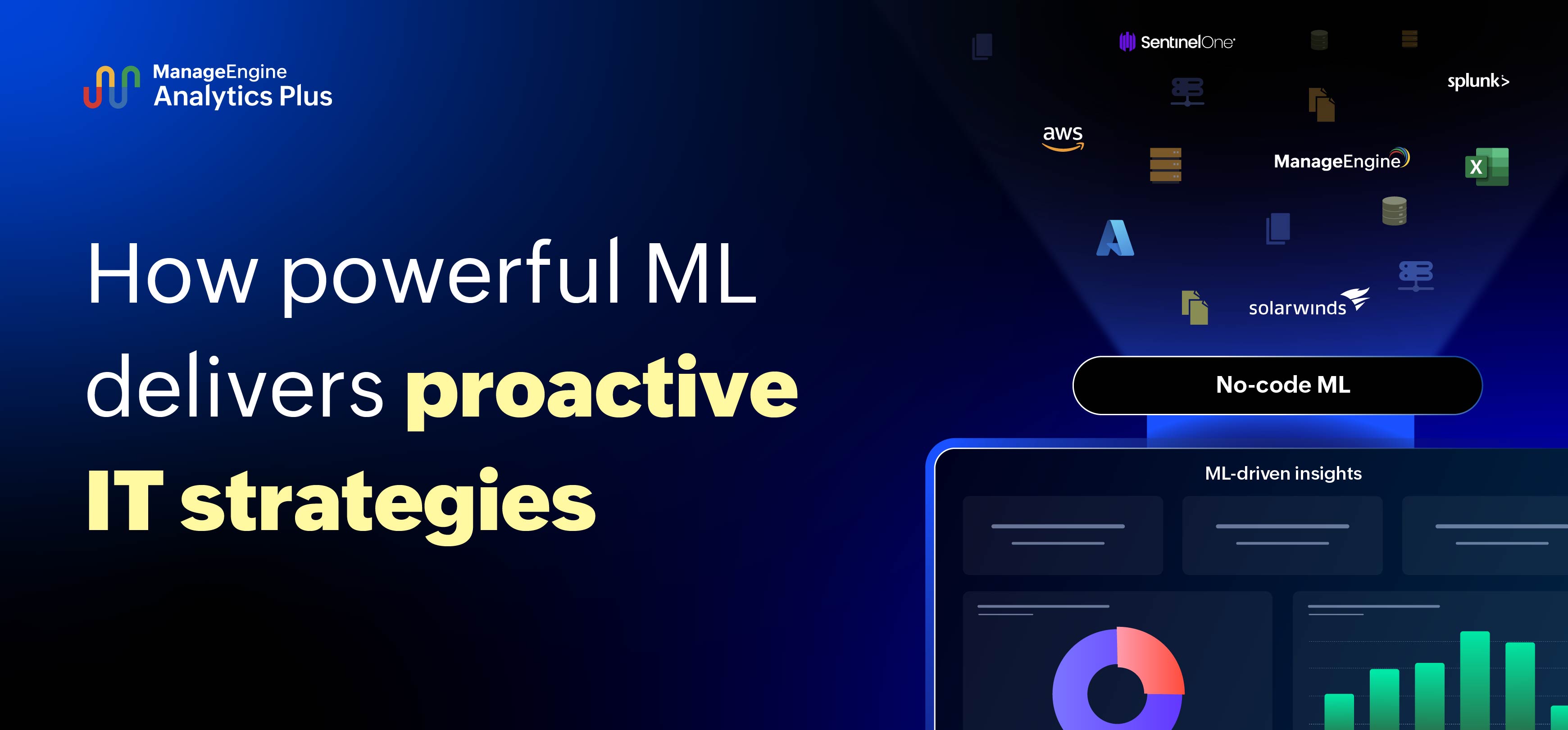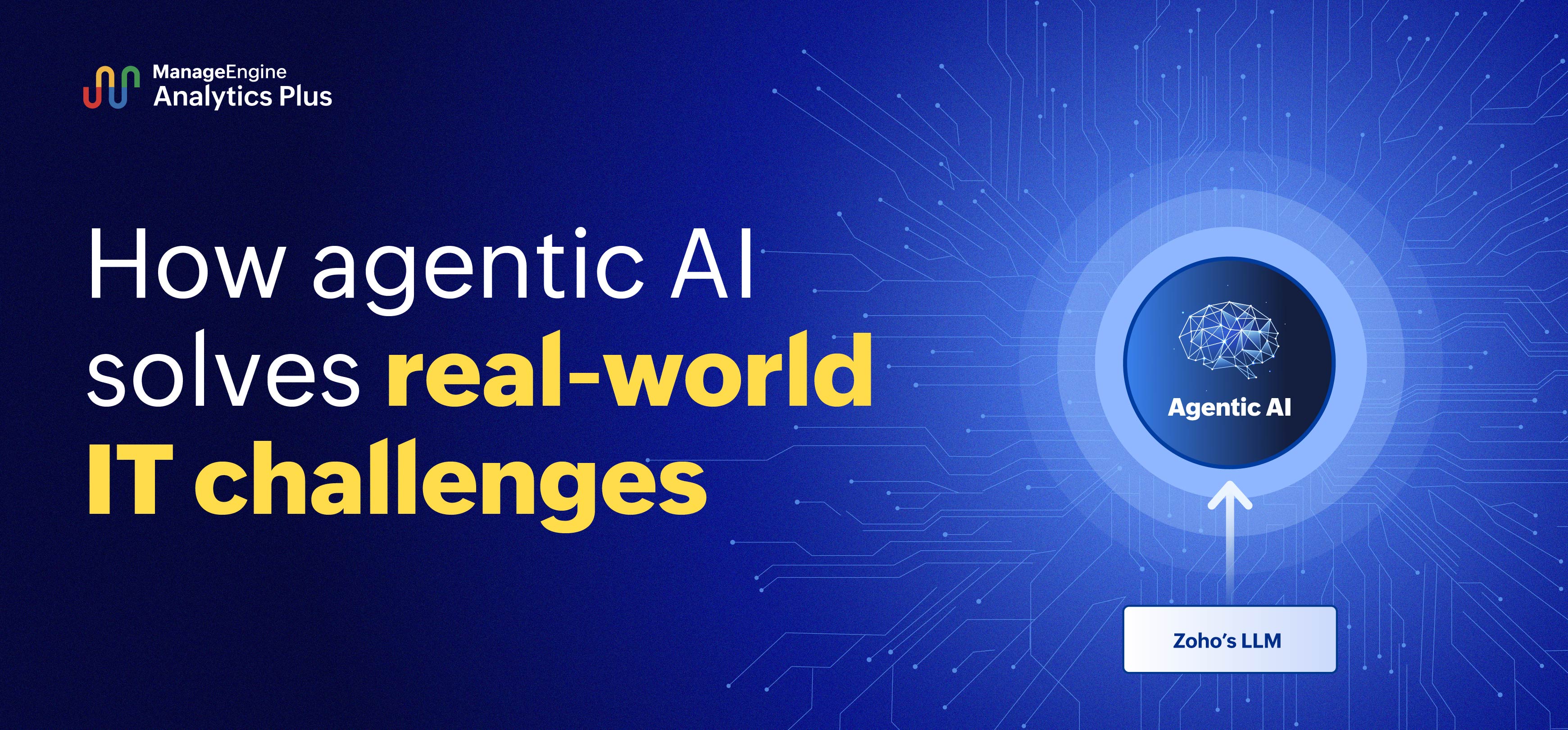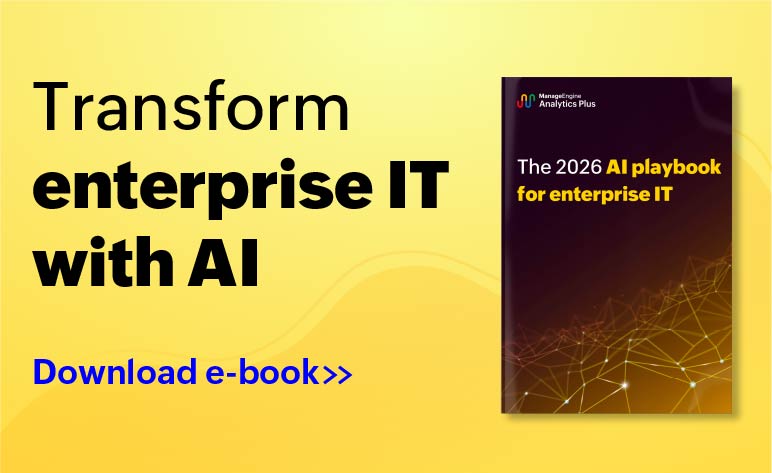- HOME
- ITSM Analytics
- 3 ways to effectively optimize IT costs with advanced analytics
3 ways to effectively optimize IT costs with advanced analytics
- Last Updated: July 1, 2024
- 1.3K Views
- 7 Min Read
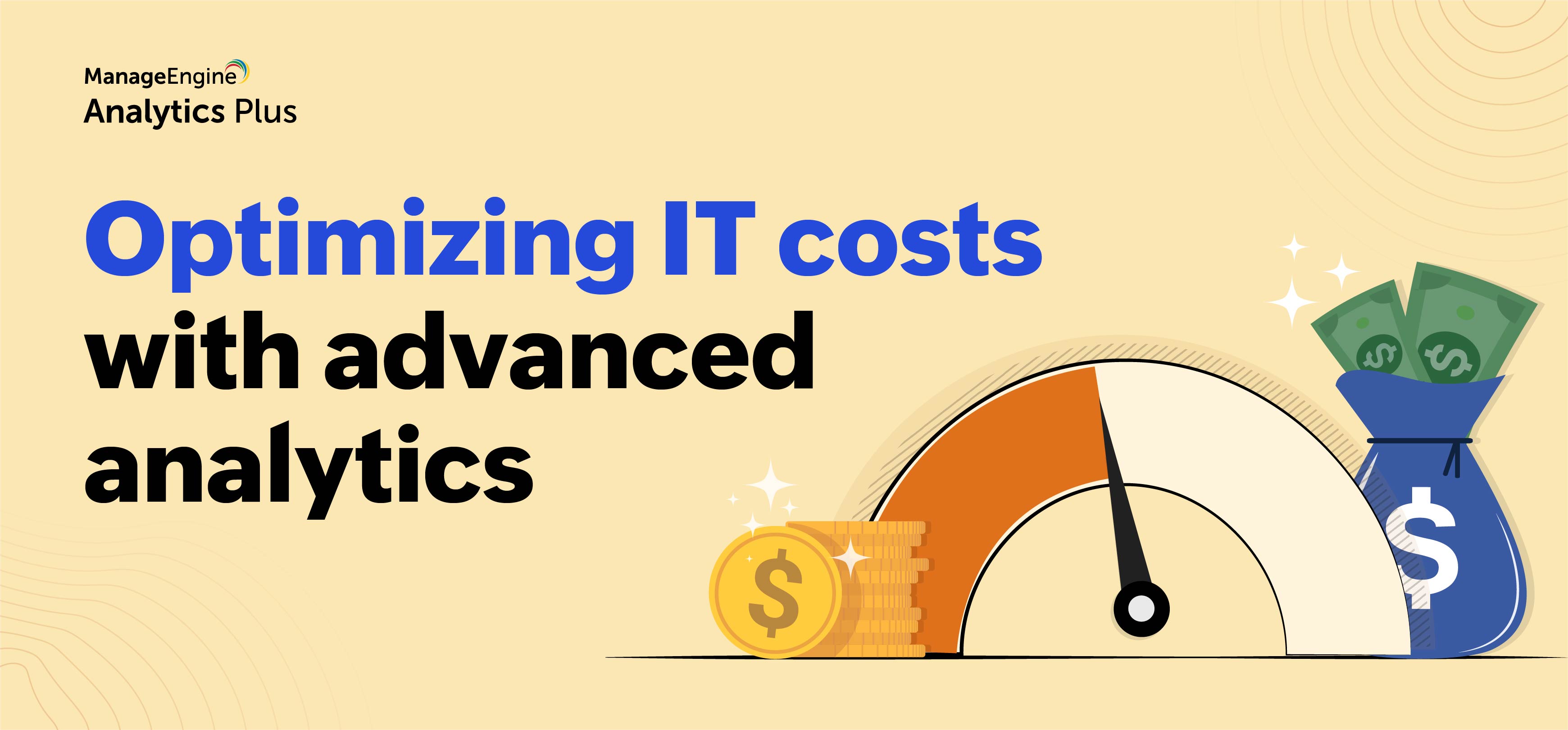
What is cost optimization?
Imagine you are a restaurant owner trying to optimize your business costs. You can move to a rent-controlled neighborhood, but you lose out on your regular clientele and risk losing the geographical advantage. You can switch to a low-cost vendor, but you might have to compromise on the quality of your food.
If you're the head of IT, then cutting IT costs could be similar to that example. Maximizing the value delivered while keeping the costs and risks minimal is difficult, but a feat you need to achieve nonetheless. Since IT is one of the most expensive cost centers for the business, there's greater pressure to keep its expenses in check.
Effective cost optimization is the holy grail that can enable you to overcome this challenge and make the most of every buck you spend. This blog highlights three simple ways to achieve effective cost optimization with advanced analytics.
What is the role of advanced analytics in IT cost optimization?
Optimizing IT costs is critical to ensure the IT budget is spent efficiently, and is not wasted on unnecessary equipment or unproductive activities. Ignoring cost reduction will slowly eat away your IT budget, while delivering little or no discernible value. Some organizations jump into cost reduction and implement strategies such as reducing infrastructure expenditure, reducing manpower, and cutting back on some service offerings. These spontaneous decisions are often counter-productive, and might result in cost savings in the short run, but cost exponentially more in the long run.
Advanced analytics paves the way for strategic and holistic cost optimizing by highlighting problem areas in IT—such as wasteful expenditure, process-level or technician-level inefficiencies, poor utilization of resources, skills gaps—that take big chunks out of the IT budget, but do not delivering ROI efficiently. Without advanced analytics, it would be impossible to gather complex, siloed, and highly complex IT data in one place in time to make effective cost optimization decisions. Additionally, IT-focused analytics applications that utilize embedded state-of-the-art AI technologies can provide contextual clues and suggestions to cut back on wasteful expenses, and recommend how to divert the reclaimed budget into other useful, ROI-generating avenues.
Cost optimization for IT
IT cost optimization is a continuous process implemented to increase the value delivered per dollar spent by the organization while reducing risks and costs. In IT, cost optimization can be achieved by:
- Optimizing the use of hardware and software assets, and eliminating waste
- Automating repetitive processes and increasing productivity
- Eliminating unnecessary costs by identifying inefficient processes
1. Effective planning and utilizing of your organization's inventory
A significant portion of the IT budget is spent on its assets. Discovering and minimizing unused assets in the inventory can save a major portion of IT costs. Here are two ways to accomplish it with analytics:
a. Reclaim unused software applications and licenses:
In most organizations, software licenses are renewed automatically each year, without waiting for employees to request license renewals. In many organizations, some employees request the purchase of a specific software, but determine that they no longer need it. This often results in a software license being automatically renewed even though the product isn't utilized. Of course, this leads to considerable waste—to the tune of about $259 for each computer in an organization, according to The Real Cost of Unused Software study. Multiple this amount by the number of employees in the organization, and you realize the possible savings for an IT budget.
Periodically assessing software use can help curb unwanted spending. Here's a report that lists users and the software on their computer citing the last time they used the software. Software renewal dates for each user are also provided to highlight how software licenses have been renewed, even if users haven't used them in over a year. For this blog, we've selected users from the design department and listed the software they use.
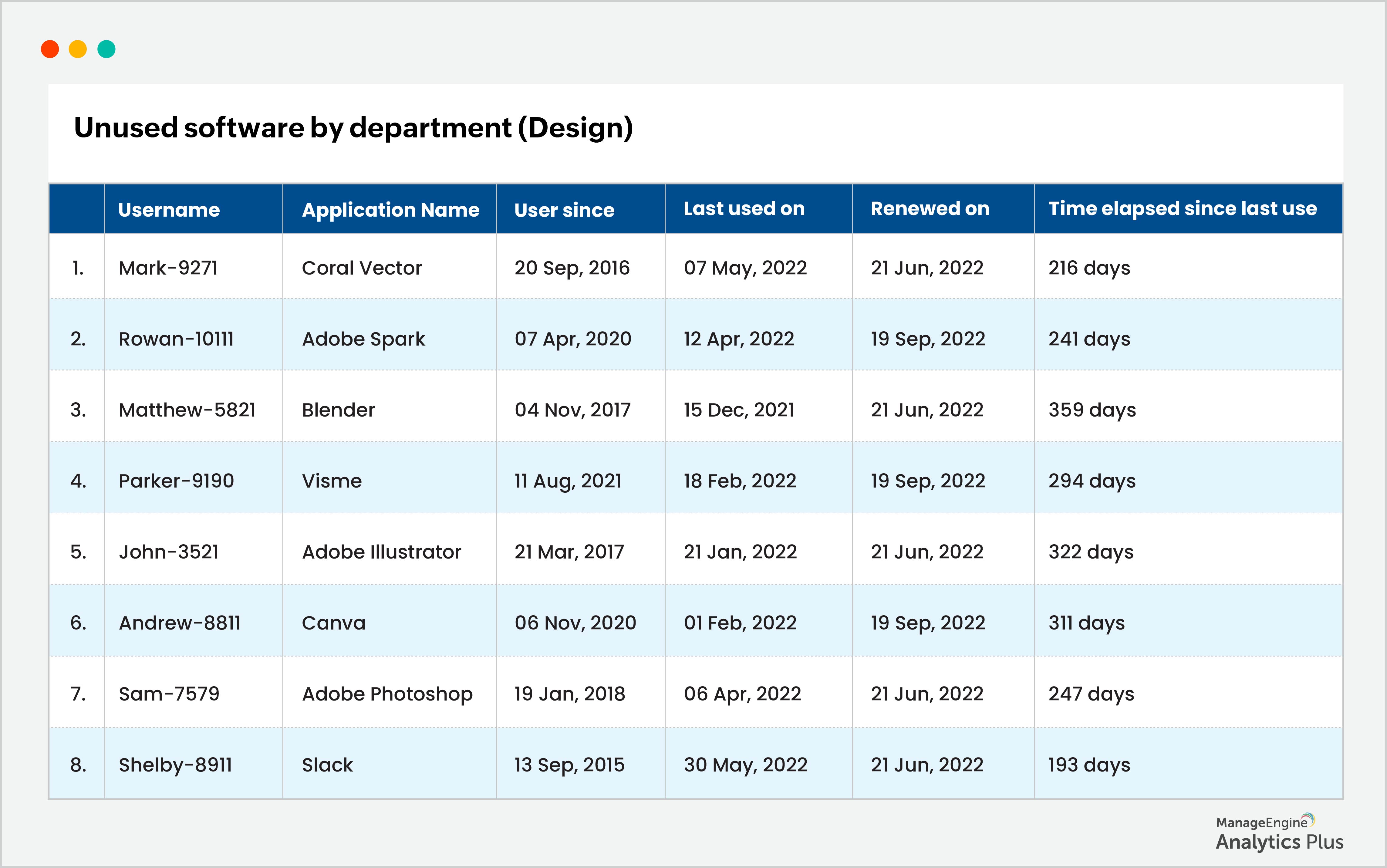
As a general practice, it's best to check with the users before renewing licenses, and verify whether there's a genuine need for the software, or if they've moved on to alternatives. This will avoid waste and ensure the IT budget is focused on where it can generate actual value.
b. Reduce hardware shelf life:
In most cases, IT buys hardware assets in bulk and stores them on shelves until they can be distributed to the end users. As a result, many assets sit idle on shelves and are of little use to end users or the organization. For instance, the useful lifetime of a laptop is four to five years. Once they are purchased, assets start depreciating and over time, their value becomes zero, or negligible. Increasingly rapid technological changes and innovation has rendered it impossible for certain hardware, such as laptops, to be used beyond their specified life span.
To receive the maximum benefit from your hardware investments, ensure that the assets are put into use immediately after purchase. Reduce asset shelf life, and increase the assets' useful life. To achieve this, plan asset purchases better, and adopt the "just in time" asset purchase model for hardware.
For bulk hires or planned expansion in headcount, work with the HR team and figure out a way to purchase assets and distribute them efficiently to minimize shelf life.
Here's a report that illustrates the overall cost of hardware assets split across their entire life span. A laptop with an average life span of 5 years purchased for $2,000, amounts to $400 per year. This means that if this laptop is left on inventory shelves for six months, it results in a waste of $200.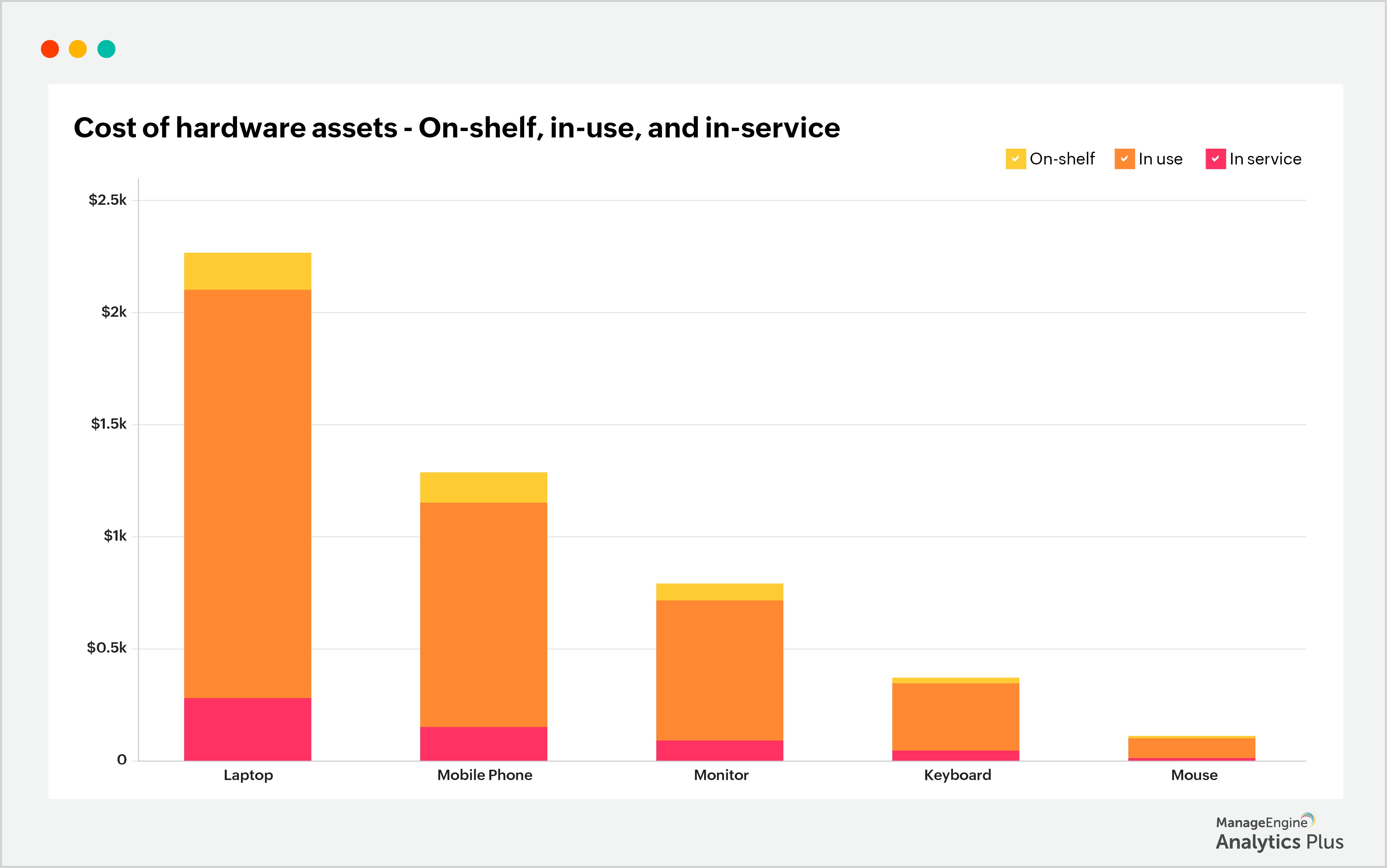
Based on the stats from the report above, let's now look at the trend of shelf-life and active life of laptops alone for a fictional organization.

From this report, it's clear that as the average shelf life of laptops drops to one month, the amount wasted in storage dramatically reduces.
2. Automate help desk processes and improve productivity
According to research, 57% of IT leaders say automation saves anywhere between 10 and 50% of the cost of their manual processes. Offloading manual, tedious, and repetitive tasks through automation lowers operating costs in your help desk.
Implementing AI-enabled chatbots and introducing self-service can help relieve your technicians from having to deal with a barrage of simple, repetitive tickets like password reset requests. This also helps streamline your help desk's processes and gives your technicians more time to tackle complicated tickets. More tickets are resolved in a day and ultimately, the cost per ticket is reduced. Here's a report that shows the decrease in overall help desk costs as the adoption of chatbots and self-service increases.
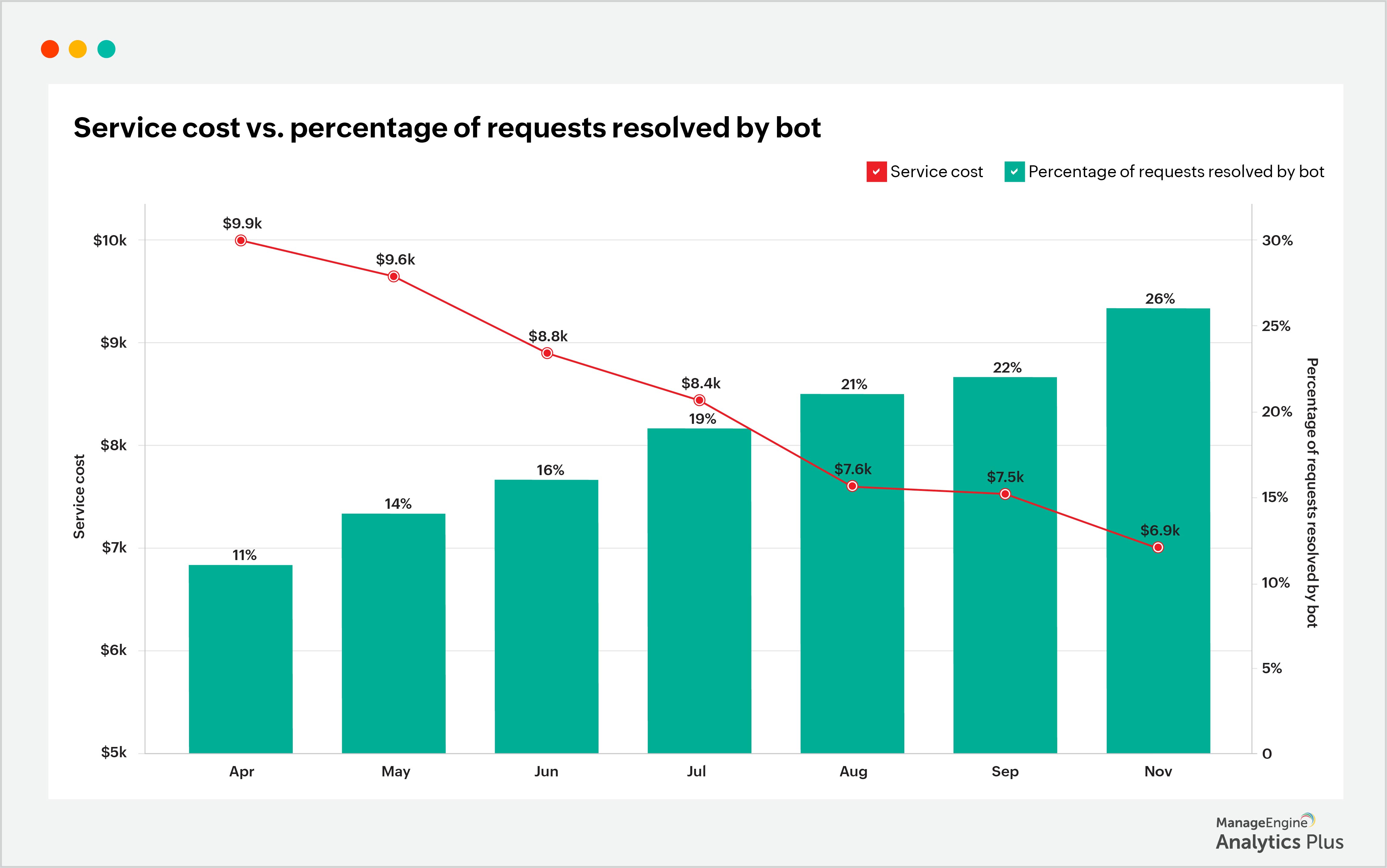
The report above clearly illustrates the inversely proportional relationship between service costs and the percentage of requests resolved by bots. Provided that the overall request volume remains constant, with more and more requests getting resolved by bots, the total service costs gradually decline.
3. Eliminating unnecessary costs by eliminating inefficiencies
An efficient help desk team should be able to deliver consistent, reliable solutions at the right time. This means that every help desk technician should have the necessary skill set to tackle all categories of requests across different levels of complexity. This means that the help desk should have technicians who are skilled at resolving tickets at different levels of complexity under every request category.
One way to tackle this and have a perfectly-balanced help desk team is to conduct skill-gap analyses frequently for technicians and identify their efficiency against various ticket categories and ticket complexity. Using the analysis to bridge the skill gap among technicians will have a positive turn on optimizing costs in your organization. Here's a sample report. Colored bubbles represent different technicians while the size of the bubble represents their proficiency in the request category.
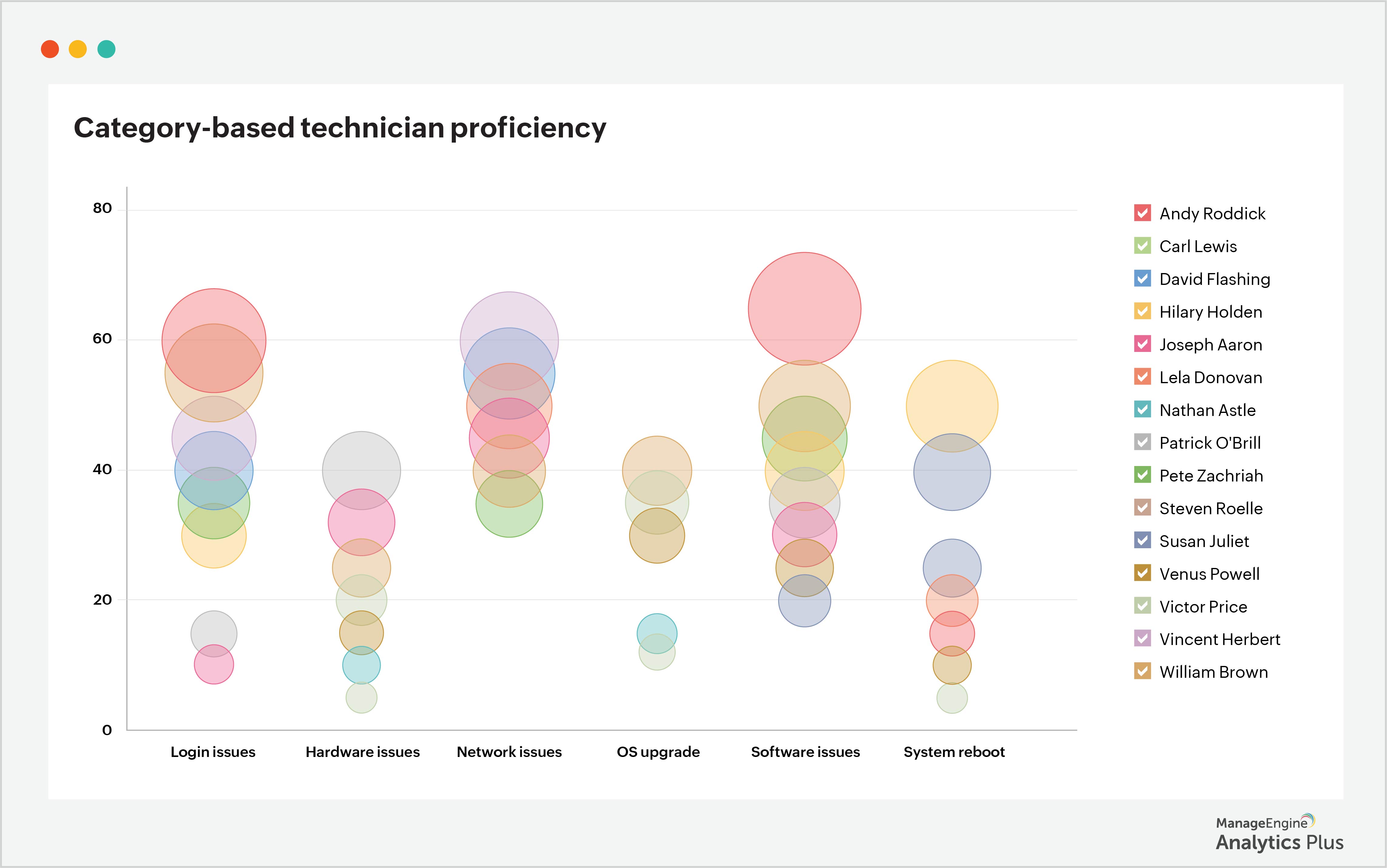
According to this report, there are enough technicians to resolve simple to mid-level requests from categories like hardware issues and system reboot issues, and mid-level requests from categories like login issues, network issues, and software issues. However, there aren't enough technicians to resolve simple requests from categories like network issues, OS upgrades, and software issues. This means simple requests from these categories are reassigned to highly-skilled technicians, leaving them with less to no time to handle complex requests. As a result, this skill gap also increases the resolution time and cost spent on resolving tickets. Hence, with the information gathered from the skill-gap analysis, IT can reduce help desk costs by working on ways to fulfill the skill gaps in categories where there are not enough technicians to resolve requests.
Key takeaways
Cost optimization is an attempt to increase the value delivered while keeping the costs in check. An effective cost optimization strategy helps you make the most out of every dollar spent, and advanced analytics makes it easier to achieve that. With the best practices outlined in the blog, we hope you're able to identify problematic areas, inefficiencies, poor utilization of resources, and wasteful expenditure that take chunks of the IT budget and rectify them seamlessly and effectively.
The reports shown in this blog were built using Analytics Plus, ManageEngine's AI-enabled IT analytics application. If you'd like to create similar reports using your IT data, try Analytics Plus for free.
Talk to our experts to discover all the ways you can leverage analytics to step up your IT cost optimization methods.

